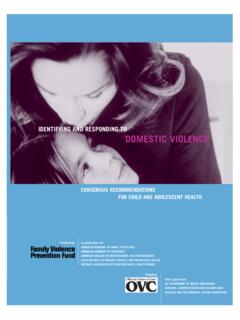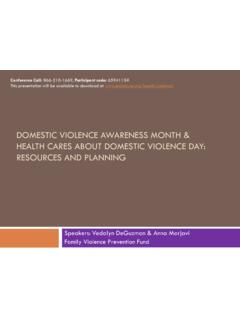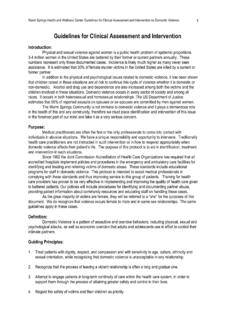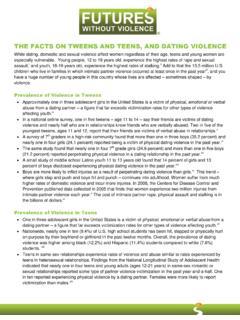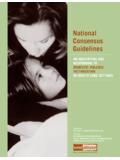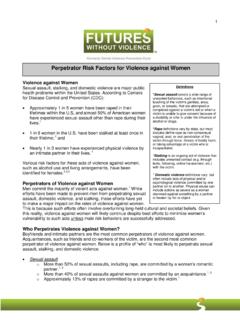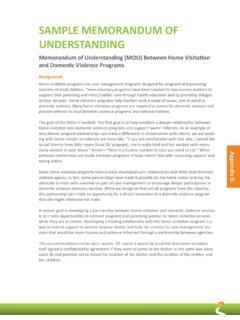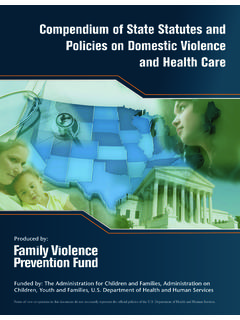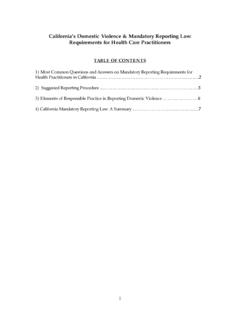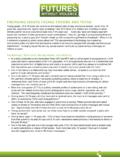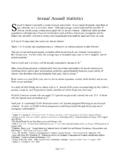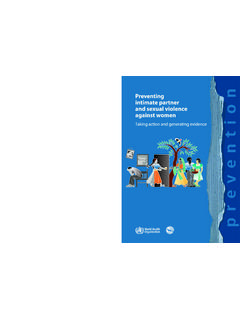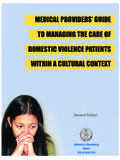Transcription of The Facts on Violence Against American …
1 Impact Statement American Indian women living on Indian reservations experience unique challenges that intensify the epidemic of Violence Against them. Accurate statistical data quantifying incidences of Violence Against women on reservations, or Indian country , is in small quantity. Comprehensive data on Violence Against women under tribal jurisdiction does not exist since no federal or Indian agency nor organization systematically collects this information Data on crime in Indian country is also lacking. This is partially due to the underreporting of crimes to tribal authorities and partly due to underreporting to the federal authorities.
2 While a comprehensive survey of the devastation caused by Violence Against American Indian women remains elusive, the glimpse that emerges from existing data collection is grim. The scope of this data collection examines Violence committed Against American Indian women and issues around the effectiveness of the local, state and federal responses. Note on Terminology Futures Without Violence is committed to using terminology that respects and honors the individuals to whom this research is concerned. Currently, there are over 560 federally recognized American Indian and Alaskan Native Indian tribes in the While no single term is universally accepted by all indigenous peoples in the , the terms American Indian, Alaskan Native, Indigenous, and Native American , are used for data reporting purposes only, and appear in the form the terminology was originally published.
3 It is not meant to minimize, exclude or generalize the individuals involved nor endorse one form of terminology over the other. Domestic Violence / intimate partner Violence /Physical Assault American Indian women residing on Indian reservations suffer domestic Violence and physical assault at rates far exceeding women of other ethnicities and The Facts on Violence Against American Indian/Alaskan Native Women A 2004 Department of Justice report estimates these assault rates to be as much as 50% higher than the next most victimized National annual incidence rates and lifetime prevalence rates for physical assaults are also higher for American Indian and Alaskan Native women
4 Compared to other women. 3 In a 2008 CDC study, 39% of Native women surveyed identified as victims of intimate partner Violence in their lifetime, a rate higher than any other race or ethnicity surveyed. 4 This finding has been common over the years. A study from 1998 that utilized a large national probability sample (n=8000) found that American Indian/Alaskan Native American women were the most likely racial group to report a physical assault by an intimate partner5 According to the Bureau of Justice Statistics, US Department of Justice, Office of Justice Programs at least 70% of the violent victimizations experienced by American Indians are committed by persons not of the same race a substantially higher rate of interracial Violence than experienced by white or black In a 2006 study.
5 96% of American Indian respondents who had been a victim of rape or sexual assault had experienced other physical abuse as well. 7 During a physical assault, American Indian and Alaska Native women were more likely to be injured than women of all other groups and more of these injuries needed medical care. 8 Violence Against Indian women occurs as a gauntlet in the lives of Indian women: at one end verbal abuse and at the other murder. Most Indian women do not report such crimes because of the belief that nothing will be done. 9 Sexual Assault Federal government studies have consistently shown that American Indian women experience much higher levels of sexual Violence than other women in the Data gathered by the Department of Justice indicates that Native American and Alaskan Native women are more than times more likely to be raped or sexually assaulted than women in the USA in general (5 vs.)
6 2 per 1,000).10 Additionally, 34% or more than one in three Native women will be raped during their lifetime, whereas for women as a whole the risk is less than one in five. 11 A 2004 study that examined intimate partner rape among American Indian women found that one in five respondents ( ) reported they had been a victim of at least one incident in their lifetime. 12 Stalking 17 percent of Native American and Alaskan Native women have been stalked in their Heath Connections/ Risk Factors Native American victims of intimate and family Violence are more likely than victims of all other races to be injured and need hospital care.
7 14 In general studies of American Indians, researchers have found evidence that this population has higher levels of alcohol abuse and dependence, suicide rates, and mental distress than the general population. 15 A 2009 study that examined the overlap of intimate partner Violence and alcohol, drug, and mental disorders found significant unadjusted prevalence ratios (severe physical and sexual abuse) for anxiety, PTSD, mood and any mental disorder. 16 During the past twenty years, there has been growing recognition among health care professionals that domestic Violence is a highly prevalent public health problem with devastating effects on individuals, families and communities.
8 The health care setting offers a critical opportunity for early identification and even primary prevention of abuse. 17 Given the multiple risks present in the AI/AN communities, the prevalence of posttraumatic stress disorder (PTSD) is substantially higher among AI/AN persons in the general community. 18 It is likely that higher rates of exposure to traumatic events coupled with the overarching cultural, historical, and intergenerational traumas make this population more vulnerable to PTSD. 19 Alcohol and drugs appear to play a larger role in the sexual attacks of American Indian and Alaska Native women compared to other women.
9 Over two-thirds (68%) of American Indian and Alaska Native sexual assault victims believed their attackers had been drinking and/or taking drugs before the offense. 20 American Indian Children and Youth American Indian and Alaska Native children are more likely to receive needed mental health care services through a juvenile justice system and inpatient facilities than non-Indian children. They are also the group most likely to encounter systems with a consistent lack of attention to established standards of care for the The number of American Indian children and adolescents reporting depression and suicidal ideation is a significant cause for concern in the United States.
10 22 Victim Perspective (Tribal specific/Culturally Sensitive) Resiliency Some American Indian and Alaskan Native communities are developing culturally sensitive interventions for Violence Against American Indian and Alaska Native women both within and outside of the criminal justice system. These family or community forums emphasize restorative and reparative approaches to justice. 23 Problems in law enforcement are exacerbated on many tribal lands due to insufficient funding, inadequate funding, inadequate training, and victims trust for outside authority. 24 Historical Trauma The abuse of Indian women and children can be traced to the introduction of unnatural life ways into Native culture25.
